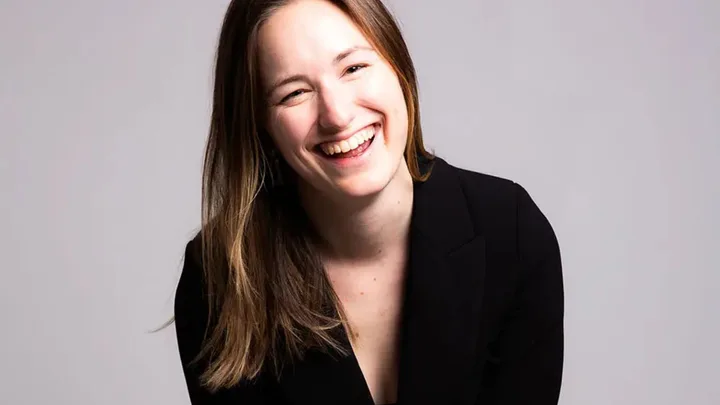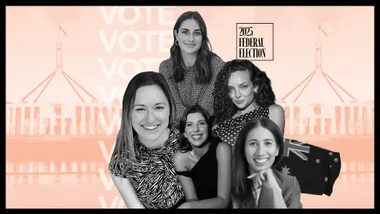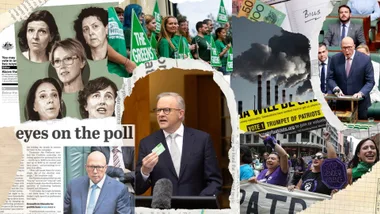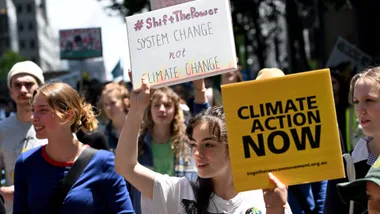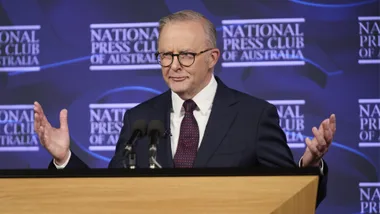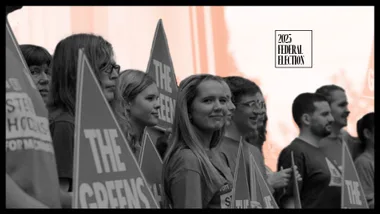Last month, I was invited to attend the federal budget lockup in Canberra. I didn’t hesitate. when accepting. After all, these rooms have traditionally been reserved for legacy media – and let’s be real, not often dominated by young women. So to receive an invite felt like a breakthrough.
But as I boarded that plane to the capital, I didn’t realise we were flying straight into a media storm. Before we’d even arrived, I received an email from a journalist asking whether I’d had to undergo security checks. My team consists of trained journalists – many who’ve worked in major newsrooms across the country – and we covered our own expenses. Still, the tone was clear: why were we there at all?
If you follow the news, you probably saw what happened next. A group of creators became the story of budget night – not the budget itself. The headlines branded us as naïve, unserious, and clueless. Milly Rose Bannister, the founder of mental health charity Allknd, was branded an “activewear ambassador” and later appeared on The Project, where she was mocked by the panel for being too young and too online to possibly have a political opinion. Her clapback – “Maybe dropping something really crucial to youth mental health? That would go viral” – was pitch-perfect.
Weeks later, ABC’s Media Watch clipped one of our Missing Perspectives videos out of context with the objective of ridiculing our team. Never mind that the content was focused on making politics more accessible to audiences traditional media has long ignored. For a generally progressive newsroom, I was surprised to see that segment and the way in which our content was used, and positioned.
Another favourite was a comment from an Australian Financial Review staffer on LinkedIn. “What does a fashion and beauty influencer have to say about the impact of a 2 per cent graduated decrease in the bottom tax rate over two years and how that helps on cost-of living-pressures and/or potential inflationary impact on the economy? You know?”
And it didn’t stop there. Senator Jane Hume raised Abbie Chatfield’s collaborative political posts in Senate Estimates. The AEC later reviewed the content and found it didn’t require authorisation, but the insinuation lingered.
Let’s be clear: I’m not denying the need for transparency and accountability when it comes to the intersection of influencers, content creators and political parties. I’ve interviewed the AEC myself on these very issues. But it’s impossible to ignore that the bulk of scrutiny is disproportionately aimed at young women.
After my experience covering the budget, it’s no surprise to me that women remain underrepresented in Australian media. In political journalism specifically, just 41 percent of bylines belong to women.
It’s also no wonder that young women are disengaging from mainstream news. The 2024 Digital News Report found that the gender gap in media interest between Gen Z men and women is widening. Traditional media just isn’t speaking to us, so we’re building our own platforms instead.
The truth is, young people, particularly women, are going to decide the next federal election and we aren’t just passive consumers of news anymore. We’re not just voting. We’re shaping the narrative. Political parties already know it, which is why they’re investing in digital-first strategies to meet us where we are.
We’re engaging, questioning, and reporting on the issues that matter most to us as young women in this country – in ways that resonate with our audience. And if traditional outlets continues to ignore or belittle us, we’ll just continue creating our own spaces, where we get to tell our stories our way.
Related articles:
- Dutton’s Avoidance Of New Media May Be His Biggest Mistake
- Getting To Know The Greens: What They Stand For This Federal Election
- How Gen Z & Millennial Voters Are Disrupting Australian Politics
- Lizzie Hedding Is On A Mission To Demystify The Ballot
